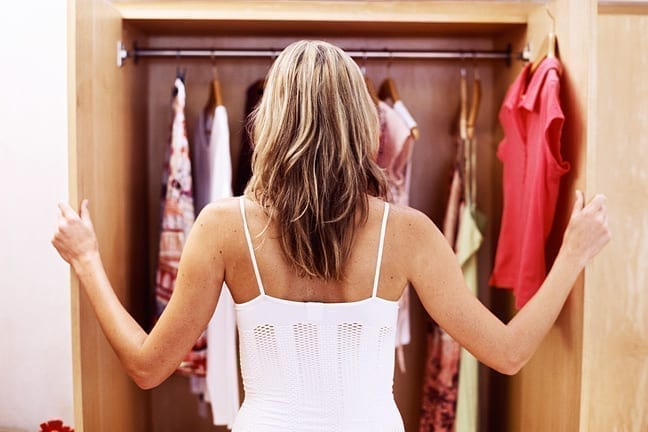As colder weather approaches, and the reality of summer’s end sets in, it’s time to buck up and consider a semi-annual closet turn over. I know this sounds like a bad fashion magazine cliché (not to mention a huge chore) but cleaning and organizing your closet every six months is a necessary evil that will lean out your wardrobe and help you get dressed faster and more efficiently for the upcoming season. So it’s out with the spring and summer staples and in with fall favorites like outerwear, knits, and maybe a trendy new purchase or two? Here are my top tips to help you get it all together and maximize Your Style…
Weed:
- Start by weeding out anything you haven’t worn in over a year. I know you’ve heard this one a million times, but if these items aren’t in play in your wardrobe after 12 months, chances are they won’t be again. This is especially true with old or worn shoes.
- Make three piles:
- Sell: Some of your gently worn clothing and accessories can fetch you a pretty penny at your local resale shop, especially those items that still have the tags on them.
- Donate: Donate anything you know you probably won’t be able to sell.
- Toss: Overly worn clothing or anything that can’t be donated should be tossed or recycled for use as household rags.
MORE: How to Have a Healthy Home
Stash:
- Stash away the summer and spring items you know you won’t be wearing during the cooler months.
- Before you store them away, make sure your important pieces are washed or cleaned. Food stains are also food for moths and other bugs.
- The best way to store items in a breathable fabric box or bag made of natural fabrics like muslin. This will allow air to flow through your garments and prevent mold and mildew.
- Never store or hang your clothes in plastic dry cleaning bags, they attract moisture that can damage your clothing.
- If you have the space, store your summer goods in another closet or under the bed. Cool dark places are always best.
Organize:
- I like to shop my closet like I shop a store, so I create a closet that is organized for the way I dress. Try separating your hanging items into three sections: Grab-and-Go Basics, Novelty Items and Outerwear.
- Grab and go basics are those tried and true pieces you use to build your outfits around, or those items you tend to wear day to day.
These are items you know will always work and they don’t require extra thought or planning when you get dressed.
- Novelty items are special tops, bottoms, or dresses that stand out and take your outfit to the next level. These may be items you wear less often so it’s great to keep them separate from your basics.
- Blazers, jackets, toppers, heavier knits and outerwear should have their own place in your fall closet. If you have the extra space, keep extra heavy outerwear pieces and long jackets in a separate closet.
MORE: Dressing for Your Body Type
Maximize:
- If you came to my house you’d find a double hook on the back of every door, in every room. I find them indispensible for laying out outfits, hanging oddly shaped items, and keeping recently worn clothes off the floor.
- Slim line hangers are your new best friends. They are slip proof, make your hanging items more uniform and take up a small amount of space—plus having all the same hangers make everything look neat and great.
- Your closet is your own, and nobody knows it better than you. Spend 10 minutes online looking for organizers, racks, bags and storage boxes that suit your specific needs, and you’ll be amazed at how you can redesign your closet to maximize space and create a beautifully organized room.
MORE: Restyle Your Wardrobe–Without Spending a Dime
Knits:
- If possible you should always fold your knits. This prevents stretching and pilling that can occur when knits are hung and packed into a tight closet.
- Definitely consider the use of cedar blocks and other natural solutions to keep the moths off and away from your favorite knits
- Wash your cashmere! Believe it or not, hand washing your cashmere sweaters is the best way to keep them fresh and soft. Chemicals in dry cleaning can strip and damage your knits. Use a drop of delicate detergent, wash in cold, reshape and dry flat.
Shoes:
- If you’re not into photographing your shoes and labeling their boxes, IKEA sells my favorite solution. They’re fabric boxes with a mesh window at the end so you can see what’s inside. They’re super inexpensive, stack neatly, and keep your shoes free from dust.
- If you can’t afford to buy shoetrees to keep your shoes and boots in shape, try using some crumpled sheets of tissue or packing paper. If it’s good enough for the $700 a pair shoes from high end department stores, it’ll be just fine for your shoes!
- I like to store all my flip-flops, and summer sandals on an over-the-door pocket shoe organizer. It’s a great way to keep up to 12 pairs of shoes clean and off the floor all winter long.




































